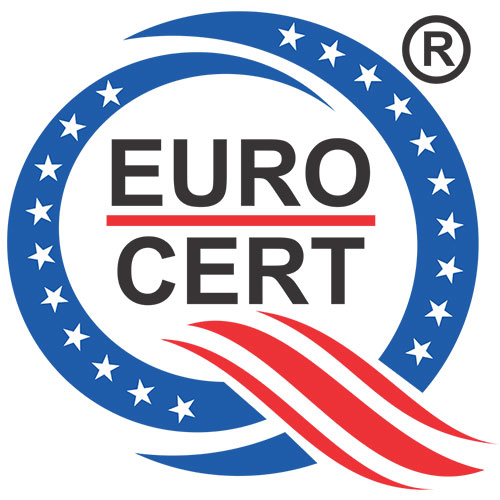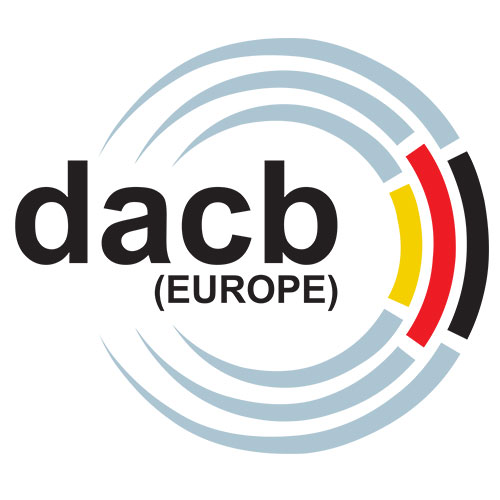ISO 22000:2018
BASIC INTRODUCTION OF ISO 22000:2018
ISO 22000, Food safety management systems - Requirements for any organization in the food chain, was first published in 2005. The standard provides international harmonization in the field of food safety standards, offering a tool to implement HACCP (Hazard Analysis and Critical Control Point) throughout the food supply chain.
The goal of ISO 22000 is to control, and reduce to an acceptable level, any safety hazards identified for the end products delivered to the next step of the food chain. (An end product is defined as a product that will not undergo any further processing or transformation by the organization)
HISTORY OF ISO 22000:2018
Since the first publication of ISO 22000 in 2005, users along the supply chain have been facing new food safety challenges – spurring a need for the standard to be revised. ISO 22000 standard was published in June 2018.
It is normal process for an ISO standard to be revised. In fact, every 5 years standards are reviewed to determine whether a revision is necessary, to ensure that the standards remain as relevant and useful to businesses as possible.
ELEMENTS OF ISO 22000:2018
The key elements can be described as follows:
Involvement of the management team
Food safety is not just something to be handled by the quality department. It is a top-management issue. ISO 22000 focuses on the involvement of the management team, which has to develop overall policy.
Communication
As food safety hazards may be introduced at any stage of the food chain, interactive communication both upstream and downstream is essential. In addition, internal communication is a key element to avoiding misunderstandings and minimizing risks. A common vocabulary is a great help in this connection.
The HACCP (Hazard Analysis & Critical Control Point) principles
ISO 22000 combines the recognized HACCP principles with prerequisite programmes. The hazard analysis determines a strategy and the prerequisite programmes set up an action plan.
System management
ISO 22000 relies on a structured management system based on relevant parts of ISO 9001. It is possible to integrate them into one management system together with ISO 22000.
Prerequisite Program
The prerequisite programmes are classified into 2 subcategories. The Infrastructure and Maintenance programs which cover permanent features in food safety. The Operational prerequisite programs are designed to reduce the risk of hazards in the product or processing environment.
OBJECTIVE SAMPLE OF ISO 22000
Examples can include goals to improve on time delivery, defects, and controlling of OHS risk & reduction in Lost Time Injury Rate, The objectives should be designed to be S.M.A.R.T (specific, measurable, achievable, realistic and time-based):
Examples of FSMS Objectives:
Target line: Yearly
- To respond to customer complaints within x hours
- To reduce the number of customer complaints by x% on previous year.
- To maintain a minimum ‘G-rating’ for our third party certification audit.
- To complete all verification activities within 5 days of the scheduled date.
- To complete food safety induction training for new employees before job commencement.
- To ensure that there is no listeria monocytogenes detected in any of x product.
- To maintain a minimum of x% for all internal GMP audits.
- To not have any food recalls during the present year.
WHAT IS THE PROCEDURE OF ISO 22000:2018 CERTIFICATION
The Certification process shall consist of the following key stages :-
- Application Review & Contract Review
- Initial Certification Audit: Stage-1 & Stage 2 Audit
- Certification Decision
- Continual Assessment (Surveillance Audit)
- Renewal Audit
- Suspending, Withdrawing, Extending or Reducing Scope of Certification
Client Side Documents Requirement
With the right preparation and a good understanding of what is required for ISO 22000 Certification, Some documentation needed ready for Certification Process. The documentation will define:
- FSMS Manual
- Records for Management Review
- Records for Responsibility & Authority
- Records for Communication
- Records for Emergency Preparedness
- Records of Education, Training, Skills & Experience
- Records Needed to Provided Evidence that the realization of Safe Products & Planning for the same
- Records of Results of Prerequisite Programmes (PRPs)
- Records for Data Collection for Hazard Analysis
- Records for Verification of Flow Diagrams
- Records for Hazard Analysis
- Records for Hazard Assessment
- Records for Effective Monitoring of Control Measures
- Records for Established Operational PRPs
- Records for HACCP Plan
- Records for Selection & Implementation of CCP (Critical Control Points)
- Records for Monitoring of CCP
- Records for Verification Activities
- Traceability (Where it is Requirement)
- Records for Correction
- Records for Corrective Action
- Records for Potentially Unsafe Products
- Records for Release of Unsafe Products as Safe
- Records of Authority Responsible for Release of Product
- Records for Disposition of Nonconforming Products
- Records for Withdrawals of Unsafe Products
- Records for Validation of Control Measure Combinations
- Results of Calibration & Verification
- Records of Internal Audits
- Records of Analysis of Verification Activities
- Records of Continual Improvement
- Records of System Updation
BENEFITS OF ISO 22000:2018
- Demonstrates commitment to customer satisfaction
- Give suppliers and stakeholders confidence in your hazard controls
- Put these hazard controls in place across your supply chain
- Introduce transparency around accountability and responsibilities
- Continually improve and update your systems so it stays effective
- Decrease in returns as a result of decrease in nonstandard production and image protection
- Embed and improve the internal processes needed to provide consistently safe food
- Forming discipline in production and transactions
- Increasing management efficiency
- Decrease in unit of harmed product
- Requires that all Hazards that may be reasonably expected to occur in the food chain are identified, assessed and controlled.
- Ensure adequate control at all stages of the food supply chain to prevent the introduction of food safety hazards.
ROAD MAP FOR ISO 22000:2018
Roadmap and plan for ISO 22000 Covering key Points:
UNDERSTANDING
Training on Standard Requirement Organizations needs to have the knowledge, skills and capability to support a standard beyond the certification audit.
PREPARE
GAP Analysis & Environmental Aspect Analysis: We do gap analysis to identify what you do and what ISO 22000 recommends to do, it may be process addition or modification to adopt International Best Practices
IMPLEMENT
System Document Development: Based on the training the client reviews their own management system and evaluates their existing policies and procedures and modifies them to comply with the best practice.
Internal Auditor: Training Regular internal audits against the system are the requirements of the standard.
REVIEW
Standard Implementation : Client must ensure that their employees are adopting the new protocols and procedures inline of the standards.
Internal Audit: Client conducts an internal audit of their management system implementation. They must examine their own processes and procedures in terms of effectiveness.
Management Review: Client to discuss the future of their management system with their senior management about the strengths and weakness of the system to identify areas for continual improvement
ASSESS
Pre-assessment: A pre-assessment audit done prior to and outside the formal scope of certification to identify area that need more work whilst also preparing key employees for the eventual audits. A useful audit to rehearse ,align and de-bug your system:
Stage 1- Assessment: Document Review
Stage 2- Assessment: Run through of the implemented systems.
PROMOTE
Certification Issue A certificate is provided to your organization.
CONTINUING ASSESSMENT
Continuing assessment Visit
A routine surveillance visit which every year or 12 months cycle over a three year period to monitor and evaluate continuing systems performance.
Re-assessment
Re certification of your management system is required every three years after the initial certification and covers a comprehensive review of the whole system. It may include an additional stage 1 review where significant problems have been encountered during the course of the certification cycle.
APPLY FOR ISO 22000 CERTIFICATION
Contact Us:If you plan to go for ISO Certification, you may ask for Quotation by providing your organization’s information in application form, you can download the inquiry form available at the website or submit your inquiry through feedback. Alternatively you may send your inquiry through mail to info@eurocertindia.com or call us at Mob: +91-9769903178
WHAT IS THE COST OF THE ISO 22000:2018
Charges for ISO 22000 Certification may depend on the size, location, Complexity of operation, Processes and it’s inter relevance. Eurocert produces a guidance price list based on company nature & size. For a Quotation please get in touch with us either by sending your inquiry through mail to info@eurocertindia.com or call us at Mob: +91-9769903178
INTEGRATION OF ISO 22000:2018 WITH OTHER STANDARD
An integrated management system (IMS) combines all related components of a business into one system for easier management and operations. Quality, Environmental, and Safety management systems are often combined and managed as an IMS.
Integrated Management System (IMS) integrates all of an organization’s systems and processes in to one complete framework, enabling an organization to work as a single unit with unified objectives.
- INTEGRATED MANAGEMENT SYSTEM (IMS) with ISO 22000:2018 + ISO 9001 :2015
- INTEGRATED MANAGEMENT SYSTEM (IMS) with ISO 22000:2018 + ISO 14001 :2015
- INTEGRATED MANAGEMENT SYSTEM (IMS) with ISO 22000:2018 + ISO 45001 :2018
- INTEGRATED MANAGEMENT SYSTEM (IMS) with ISO 22000:2018 + ISO 27001:2013
- INTEGRATED MANAGEMENT SYSTEM (IMS) with ISO 22000:2018 + ISO 13485:2016
- INTEGRATED MANAGEMENT SYSTEM (IMS) with ISO 22000:2018 + ISO 50001:2018
BENEFITS OF INTEGRATED MANAGEMENT SYSTEM (IMS)
- All integrated Standards have a document control requirement
- Meeting all standards’ requirements with one set of policies and procedures
- Increased efficiency and effectiveness.
- Reductions in costs associated with audits.
- Displays commitment to continuous improvement for the organisation as a whole.
- Presents a clear uniform image of the whole organisation.
- Reduces duplication, bureaucracy and maximises Resources.
- Increases time available to management to implement proactive measures.
- Improves internal and external communications.
- The control of records is specified in all three
- Training, competence and awareness is seen in all three
- All three have a requirement for internal auditing
- Management review is seen as critical for all three
- Standards Monitoring and measuring devices are referred to in each
- Continual improvement is key to all three
- Corrective and Preventative Action are major requirements
List of ISO 22000 Series Standard
ISO is developing additional standards that are related to ISO 22000. These standards will be known as the ISO 22000 family of standards. At the present time, the following standards will make up the ISO 22000 family of standards:
ISO 22000 - Food Safety Management Systems
Requirements for any Organization in the Food Chain
ISO 22001
Guidelines on the application of ISO 9001:2000 for the food and drink industry (replaces: ISO 15161:2001).
ISO/TS 22002- Prerequisite Programmes on Food Safety
Part 1: Food manufacturing; Part 2: Catering; Part 3: Farming; Part 4: Food packaging manufacturing; Part 6: Feed and animal food production
ISO TS 22003 - Food Safety Management Systems
For Bodies Providing Audit and Certification of Food Safety Management Systems
ISO TS 22004 - Food Safety Management Systems
Guidance on the Application of ISO 22000:2005.
ISO 22005 - Traceability in the Feed & Food Chain
General Principles & Basic Requirements for System Design & Implementation
ISO 22006 - Quality Management Systems
Guidance on the Application of ISO 9002:2000 for Crop Production
Accreditation


